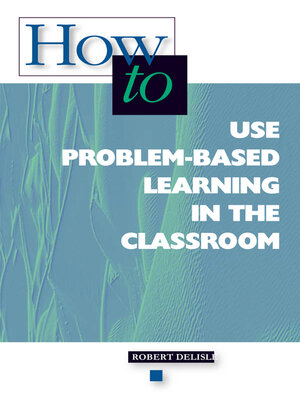
Sign up to save your library
With an OverDrive account, you can save your favorite libraries for at-a-glance information about availability. Find out more about OverDrive accounts.
Find this title in Libby, the library reading app by OverDrive.



Search for a digital library with this title
Title found at these libraries:
| Library Name | Distance |
|---|---|
| Loading... |
Engaging and motivating students—especially the least motivated learners—is a daily challenge. But with the process of problem-based learning (PBL), any teacher can create an exciting, active classroom where students themselves eagerly build problem-solving skills while learning the content necessary to apply them.
With problem-based learning, students' work begins with an ill-defined problem. Key to this problem is how it explicitly links something important in students' daily lives to the classroom. This motivational feature is vital as students define the what, where, and how of resolving the problem situation.
Problem-based learning may sound potentially chaotic and haphazard, but it rests on the firm foundation of a teacher's work behind the scenes. The teacher develops a problem long before students see it, specifically choosing the skills and content the problem will emphasize and matching those to curriculum and standards. Though a PBL problem will have no "right" answer, the teacher structures the experience so that specific learning takes place as students generate the problem-solving steps, research issues, and produce a final product. The teacher guides without leading, assists without directing.
Note: This product listing is for the Adobe Acrobat (PDF) version of the book.







